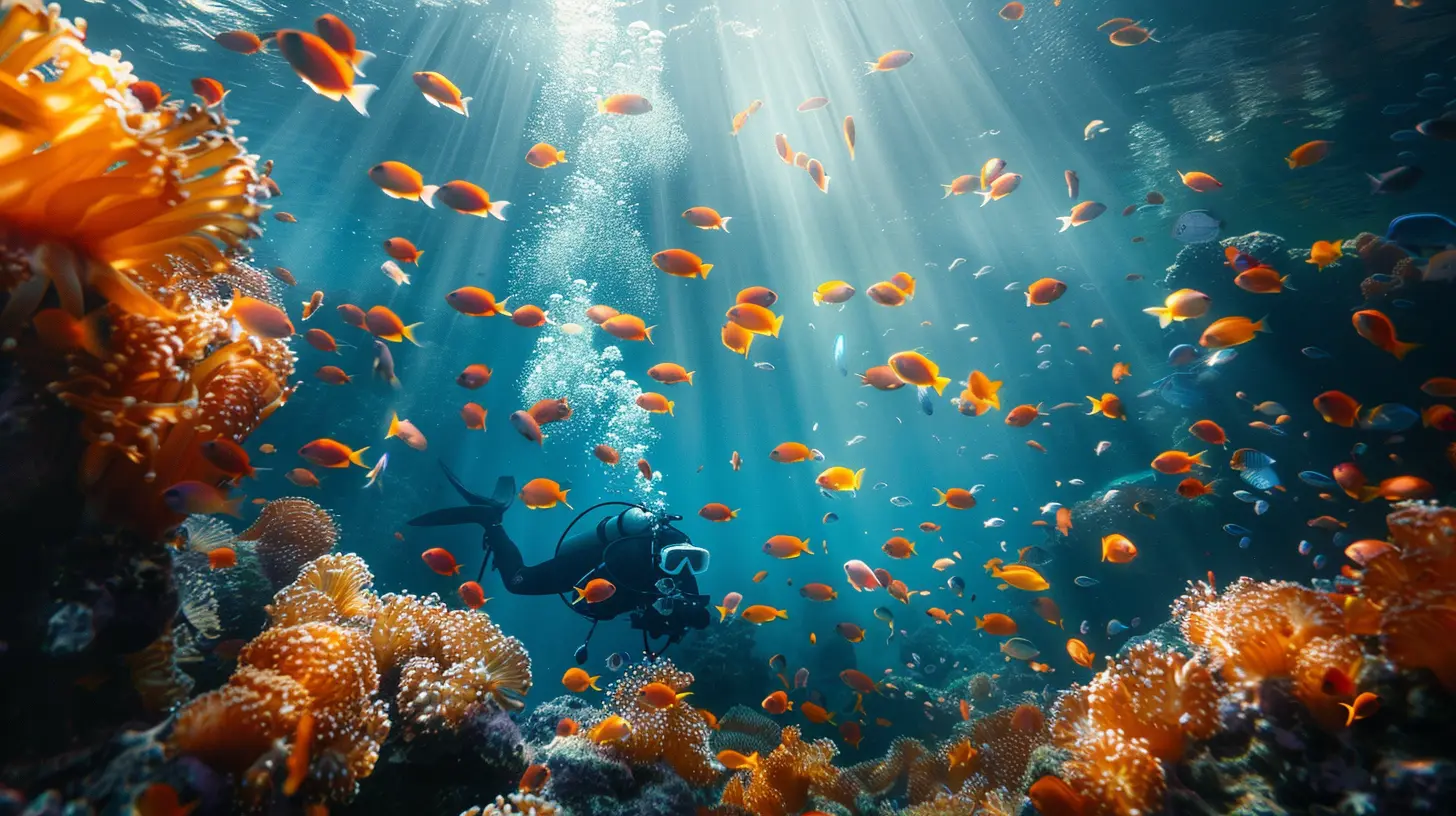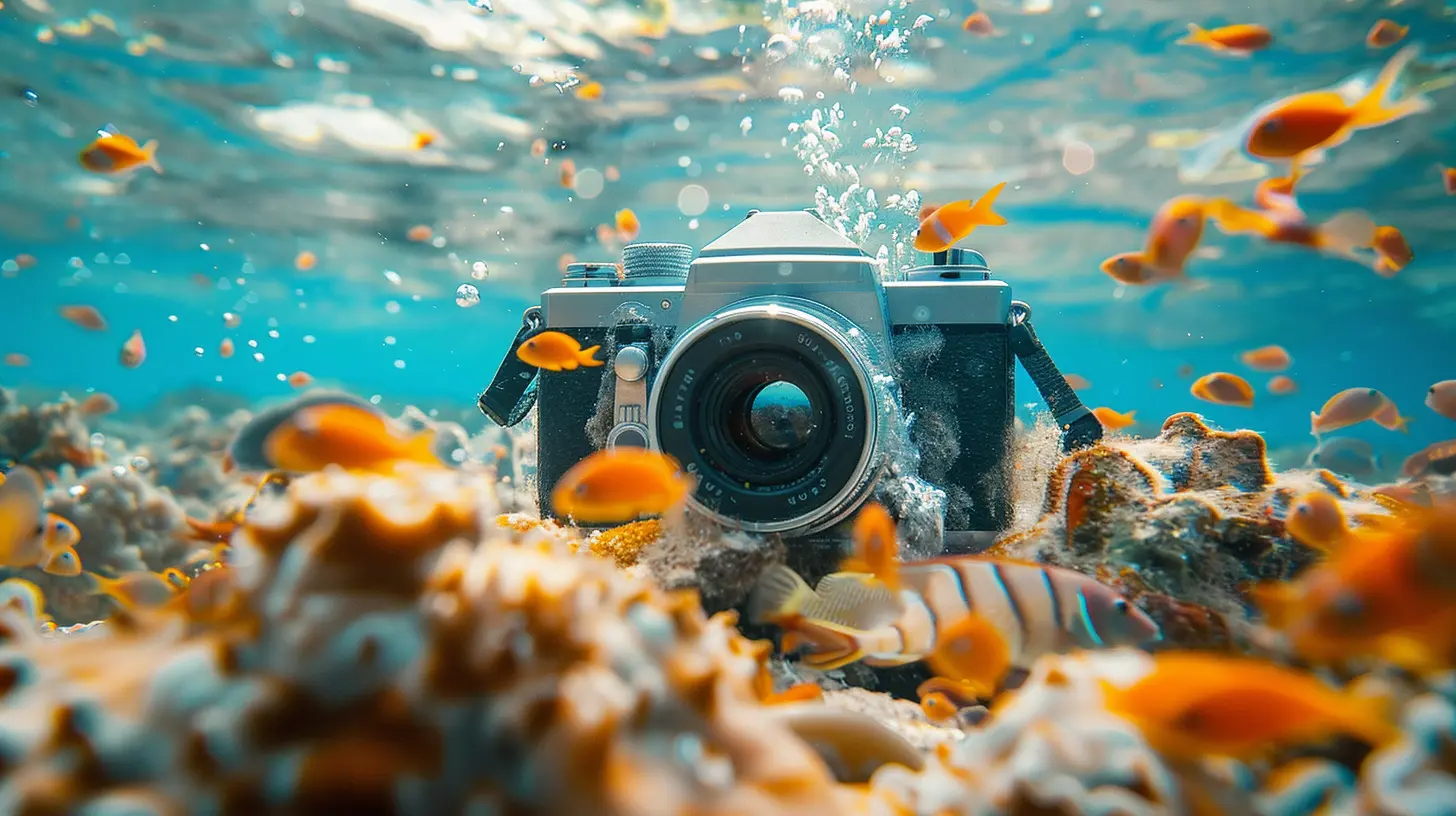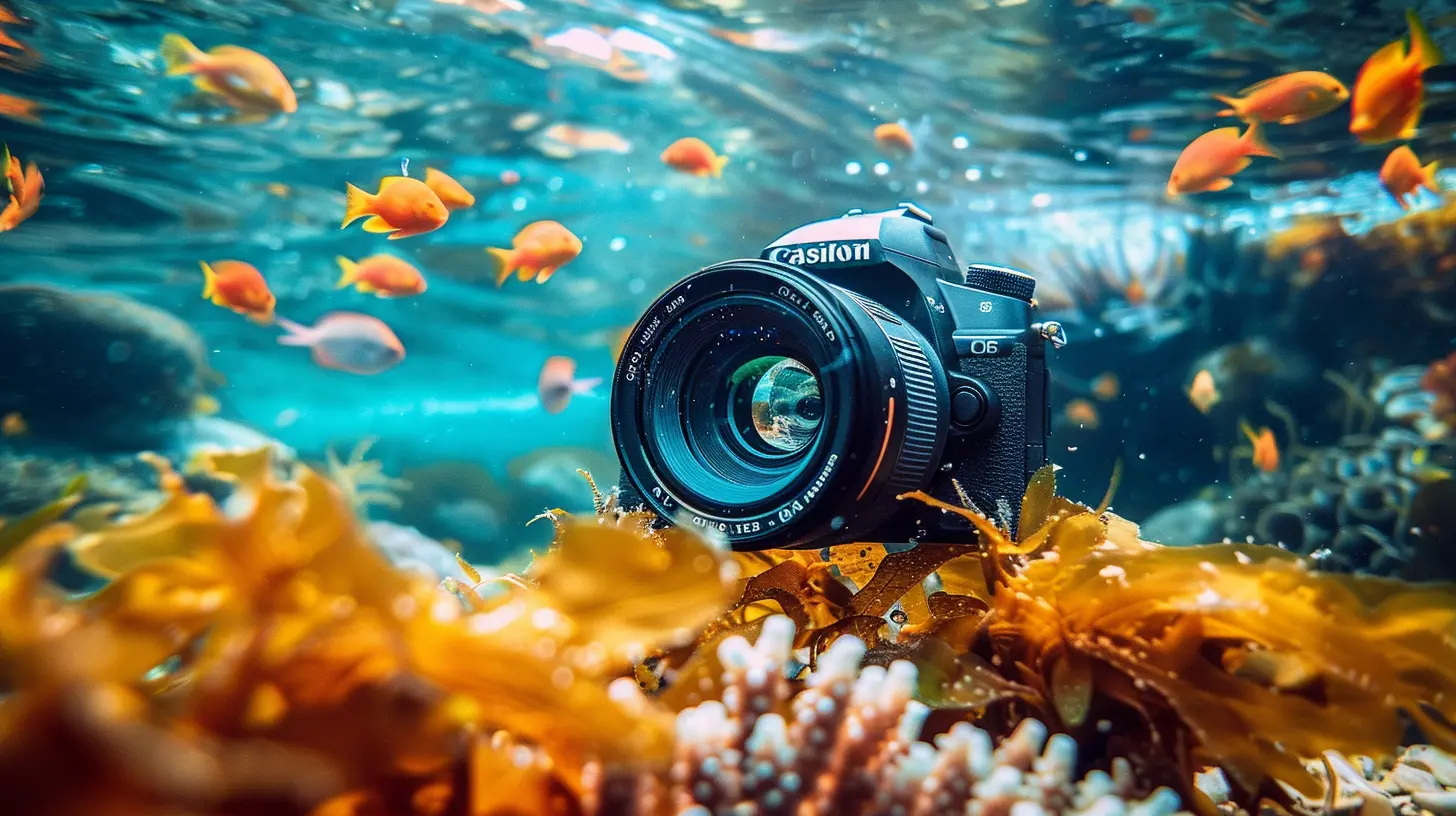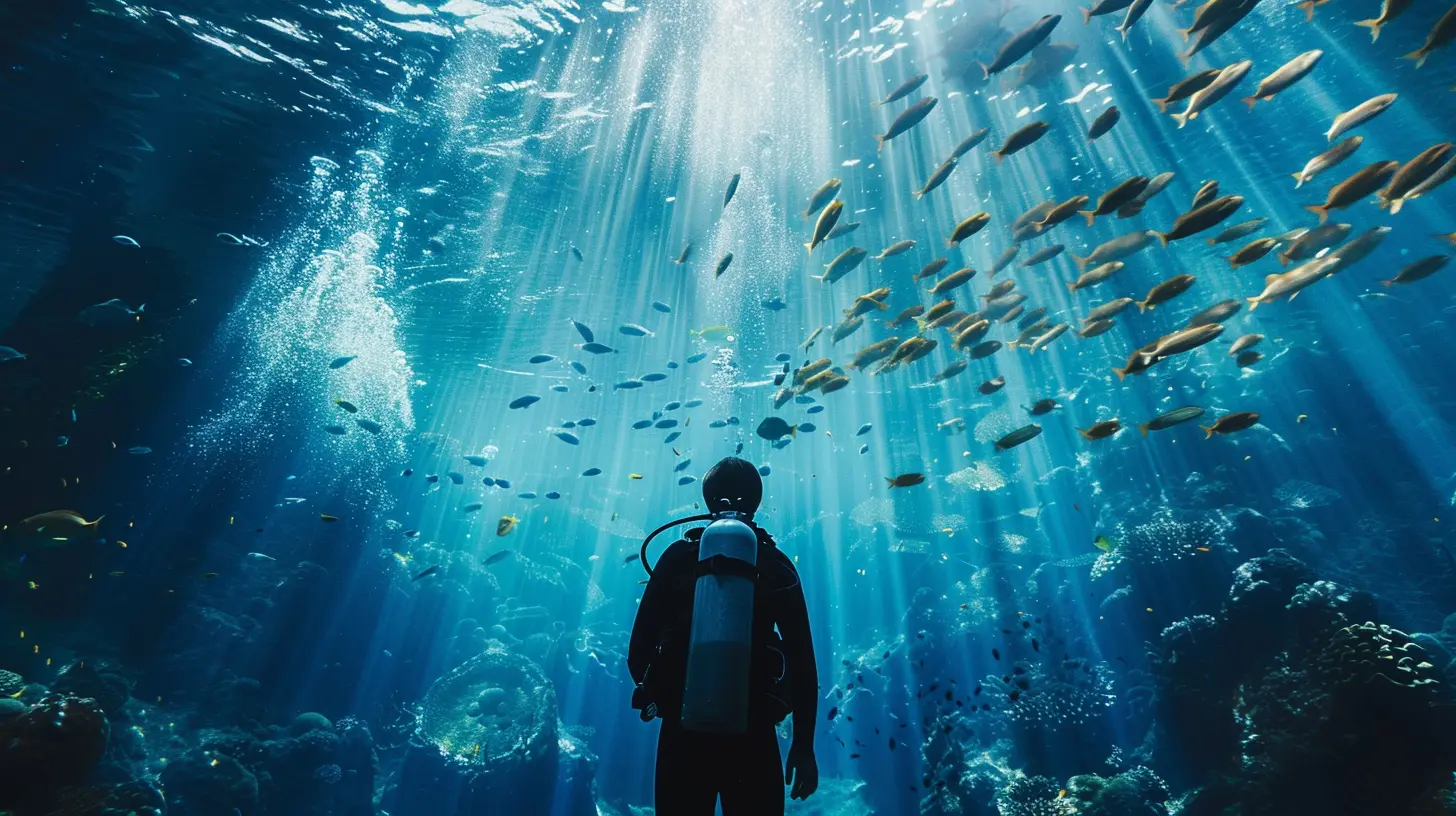Exploring the World of Underwater Photography with Digital Cameras
25 August 2025
Let’s face it — the ocean is like another world, and underwater photography is your passport to capturing its magic. Whether you're daydreaming about snorkeling with sea turtles or diving deep with colorful coral reefs, there's something insanely cool about snapping photos underwater. But wait — isn’t that just for pro scuba divers or people with gear that costs more than a small car?
Nope! Thanks to the wonders of digital cameras and some nifty accessories, underwater photography is more accessible than ever. In this playful yet practical guide, we’re diving (pun totally intended) into everything you need to know about capturing the underwater world with digital cameras. Ready to get your feet wet? Let’s go!
What Makes Underwater Photography So Captivating?
Have you ever noticed how everything seems more peaceful underwater? Time slows down, the noise disappears, and suddenly you're swimming among creatures you’ve only seen in National Geographic. It’s like being in a dream… but with fish.Underwater photography lets you freeze these surreal moments. You can photograph clownfish darting among anemones, watch a sea turtle glide by with regal grace, or even capture that weird-but-cool jellyfish floating like it owns the place. The ocean offers a palette of colors, textures, and life forms you just won’t find on land.
The Magical Gear: What You’ll Need
Ready to dive in? Great! But before you cannonball into the deep blue, let’s talk gear. You don’t need a Hollywood budget, but you can't exactly take your standard point-and-shoot underwater and expect miracles.1. Digital Cameras for Underwater Use
First things first — not all digital cameras are created equal. Some are waterproof "out of the box," while others need a special case (called a housing) to survive underwater.Here are your main options:
- Compact Waterproof Cameras – These babies are ready to go with no extra housing. Perfect for beginners. (Think: Olympus Tough TG-6 or GoPro HERO series.)
- Mirrorless and DSLR Cameras – For the shutterbugs who want full control and pro-level shots. These need waterproof housings but give you incredible image quality.
- Smartphones with Waterproof Cases – Yep, even your phone can go scuba diving with the right case. Just don’t drop it in a coral crevice.
> Pro Tip: Start small. It’s better to master basic shots with a compact camera than fumble with a heavy DSLR at 30 feet deep.
2. Waterproof Housings and Accessories
A camera is only as good as its shield underwater. That’s where waterproof housings come in. These cases seal your camera from water while still letting you control settings, press buttons, and shoot with ease.You might also want:
- Underwater Lights or Strobes – Light disappears fast underwater (starting with red), so external lighting helps your colors pop.
- Floating Straps – Because... gravity doesn’t work the same here. Your gear could float or sink — better safe than sorry.
- Anti-Fog Inserts – Nothing worse than a fogged-up lens when a dolphin swims by.
How to Nail Those Jaw-Dropping Underwater Shots
Okay, now that you're suited up like a camera-carrying Aquaman or Aquawoman, how do you actually take good photos underwater? Let’s break it down in bite-sized tips.1. Get Close — Then Closer
Water eats up color, contrast, and clarity. The trick? Get as close as physically (and politely) possible to your subject — ideally within 3 feet. Think of your camera like a curious fish — it needs to swim up close to see what’s what.2. Light is Everything
Ever wonder why your underwater photos look blue or greenish? That’s because water filters out warm colors like red and yellow. To fix this:- Use a strobe or underwater flash.
- Or shoot in shallow water where sunlight reaches.
- Or, if you’re editing later, try white balance correction to bring back lost hues.
3. Shoot Up, Not Down
Photos taken from above often flatten your subject. Try angling your shot upward for more dynamic, dramatic compositions. A turtle silhouetted against the sun? Chef’s kiss.4. Be Patient and Observe
Marine life is shy. You can’t just charge in like a clumsy sea lion and expect to get the perfect shot. Hover calmly, breathe slowly, and wait for that perfect moment. Trust me, patience pays off — sometimes in the form of a sea horse photobombing your frame.
The Fun Challenges (And How To Tackle Them)
Let’s be honest — underwater photography isn’t all sunshine and seahorses. The ocean throws curveballs. But hey, what adventure doesn’t?Buoyancy Battles
Trying to hold still underwater is like trying to hover in space. Use a good buoyancy compensator and stay neutrally buoyant so you don’t crash into coral (or accidentally float away mid-shot).Fogged-Up Lenses
The enemy of all underwater photographers. Use anti-fog inserts or rub a tiny bit of baby shampoo on the inside of the lens (yes, really), then rinse it gently.Slippery Subjects
Fish are fast. Like, Olympic-swimmer fast. Use continuous shooting mode or "burst" mode to fire off several shots rapidly. One of them is bound to be a winner.Editing: Where the Magic Continues
Even the best shots look a bit dull straight out of the water. That’s where editing comes in. Your photo editing software is like a magic wand that brings back all the glorious colors and sharpness.Tips for underwater photo editing:
- Adjust white balance to fix colors.
- Boost contrast and saturation (lightly!).
- Use sharpening tools carefully — too sharp and it looks fake.
Tools like Adobe Lightroom, Snapseed, or even your phone’s basic editor can do wonders.
Popular Spots for Underwater Photography Adventures
Feeling inspired to plan a trip? Here are some underwater photographer favorites:- Great Barrier Reef, Australia – Duh. It’s the largest coral reef system on Earth. Need we say more?
- Raja Ampat, Indonesia – Bio-diverse paradise. Like, the Disneyland of marine life.
- Belize Barrier Reef – Caribbean vibes, clear water, and loads of marine subjects.
- Hawaii – Spinner dolphins, turtles, and lava tubes. What’s not to love?
- Red Sea, Egypt – Exotic fish, shipwrecks, and crystal-clear visibility.
Should You Take a Course?
Honestly, yes. While watching YouTube videos is a great start, nothing beats hands-on learning. Scuba diving organizations like PADI offer courses specifically for underwater photography. You’ll learn about equipment, techniques, and marine etiquette — all while getting some practice shots along the way.Respect the Ocean, Always
Let’s not forget you’re a guest in the underwater world. Resist the urge to touch coral, disturb marine life, or leave behind any trash. Take only photos, leave only bubbles. 🌊Final Thoughts: Dive Into a New Adventure
Underwater photography with digital cameras is more than a hobby — it’s a ticket to a world of wonder, color, and life beyond our everyday sights. You don’t need to be a pro diver or a tech genius to start. Just grab the right gear, jump in (literally), and start snapping.And remember, your first shots might look more "meh" than “wow,” but every underwater photographer started somewhere. With practice, patience, and a little post-editing polish, you’ll be capturing frame-worthy photos before you know it.
So gear up, get in the water, and shoot your shot. Who knows? That next jellyfish selfie might just end up as your phone wallpaper.
all images in this post were generated using AI tools
Category:
Digital CamerasAuthor:

Michael Robinson
Discussion
rate this article
1 comments
Tempest Lewis
This article provides a fascinating glimpse into underwater photography, showcasing the advancements in digital cameras that make capturing marine life more accessible. The tips on equipment selection and techniques are particularly helpful for beginners. A must-read for anyone looking to dive into this captivating and vibrant genre of photography!
August 29, 2025 at 10:43 AM

Michael Robinson
Thank you for your thoughtful comment! I'm glad you found the tips helpful and the advancements in underwater photography exciting. Happy diving and shooting!


